Kashgar pottery: The clay art can be traced back to the Neolithic Age. Around the 2nd century colored pottery appeared. The local loess, owing to its fine texture and adhesiveness, is ideal for pottery making. The craftsmen make the earthenware solely guided by their experience, without using pattern papers or molds. Some artisans make products for daily use while others focus on fine art wares. Most of the products have traditional Islamic colors and patterns.
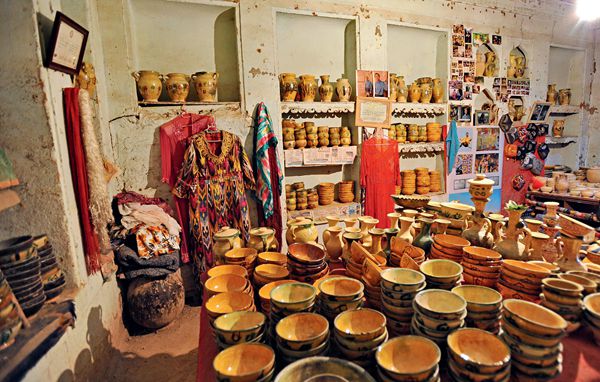
The pottery includes bowls, plates, trays, kettles and jugs. The water jug, used to wash hands, is regarded as the most representative Kashgar earthenware due to its unique shape.
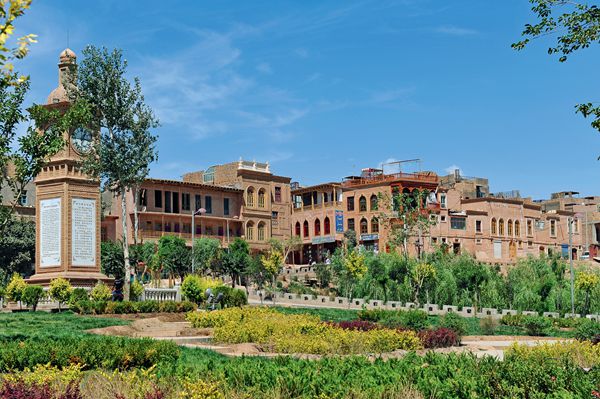
Old Kashgar Town: Located in downtown Kashgar, the old town is the most typical example of Uygur Islamic culture. Designated a national Five-A scenic spot, it sits in a maze of alleys, each with its own distinctive character like the Blacksmith Alley, Flowerpot Alley, Handicraft Alley and Pottery Alley.
Some residential houses are open to visitors. When both gates in the front are open, it indicates the master of the house is at home. If only one is open, only the mistress is in. If a curtain hangs in front of the gate, it implies there’s a guest inside. If you lose your way in the old town, the bricks under your feet will convey directions. A hexagonal brick means a road and a quadrangaler brick signals the road is closed.
Customs: The Uygurs are hospitable, receiving even strangers warmly. They follow etiquettes and have certain taboos, and strictly observe the Sunna, the way of life prescribed in Islam. They sit on their heels, as it is forbidden to sit with legs stretched and the soles facing other people.
They wash their hands before and after each meal. However, only three washing movements are allowed, and then the hands have to be dried with a towel. Shaking one’s hands to get rid of water drops is not allowed. While eating a naan (flatbread), they have to break it into small pieces with their hands instead of directly biting it. When receiving a cup of tea or other things, they have to extend both their hands. Dirty things can’t be taken inside places like cemeteries and mosques.
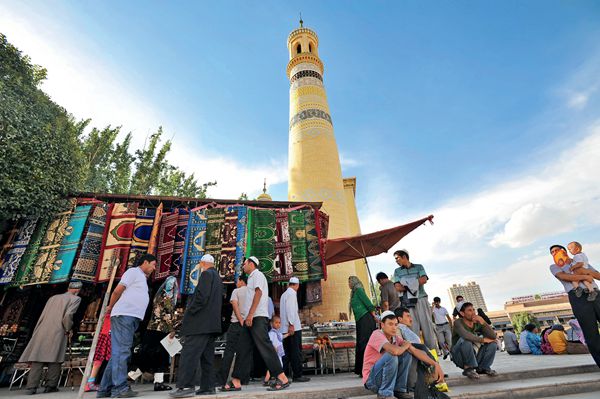
The Hytgah Folk Cultural Tourism Scenic Spot, with the Hytgah Meschit or Mosque at its center, comprises a sightseeing tower, folk custom exhibition halls, the Museum of Western Regions and the shopping street of gold jewelry and handicraft shops.
Occupying over 16,800 square meters west of its namesake square, the Hytgah Meschit has been standing for more than 500 years. In ancient times, it served as an important school to spread Islamic culture and cultivate talents. Many high-ranking Islamic clergies and scholars from around the Tianshan Mountains and even Central Asia once graduated from here. Now, it has become a place for Muslims all over Xinjiang to observe Islamic rituals.
According to the Sunna, women are not allowed inside mosques and non-Muslims are not allowed to attend the Friday worship. Visitors should also remember that flash photography is banned.
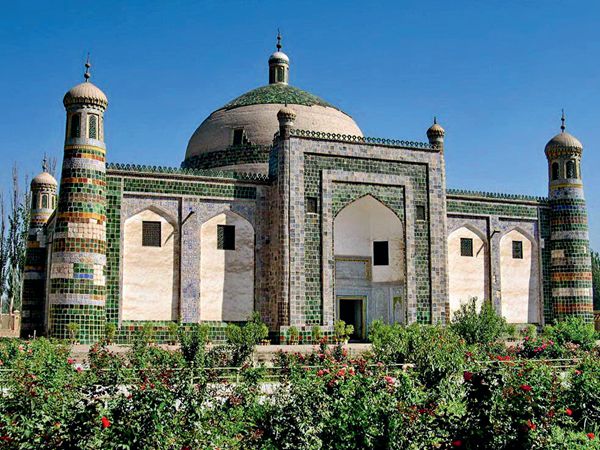
The Xiangfei Cemetery, located in Haohan Village, is five kilometers east of the city proper. Xiangfei was a concubine of Emperor Qianlong (1711-1799). The cemetery is a compound including grand mosques and the minaret. The mausoleum is the largest domed construction in Xinjiang. Its walls are of dark green glazed bricks with colored patterns and Koran verses inscribed on them, which were made over 300 years ago.
Standing in the northeast corner of the cemetery, Xiangfei’s grave has blue glazed bricks, covered by a cloth. Her name is inscribed in both Uygur and Chinese. The imperial concubine’s legendary life – different versions of it – makes the tomb enigmatic. The cemetery is also home to the tombs of 72 people from five generations of one large family.
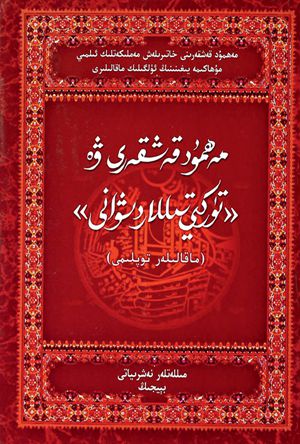
A Turkic Dictionary with Arabic annotations was completed in the 1070s by the great Uygur scholar Mehmud Qeshqiri, who was born in Kashgar. The dictionary embodies the splendid culture created by the Uygurs and other peoples living in the Central Asia. It contains abundant data on the ancient Turkic phonetic system, grammar, vocabulary and dialects.
It is also a collection of valuable social documents and the history of various Turkic groups.
(Compiled by China Today)
